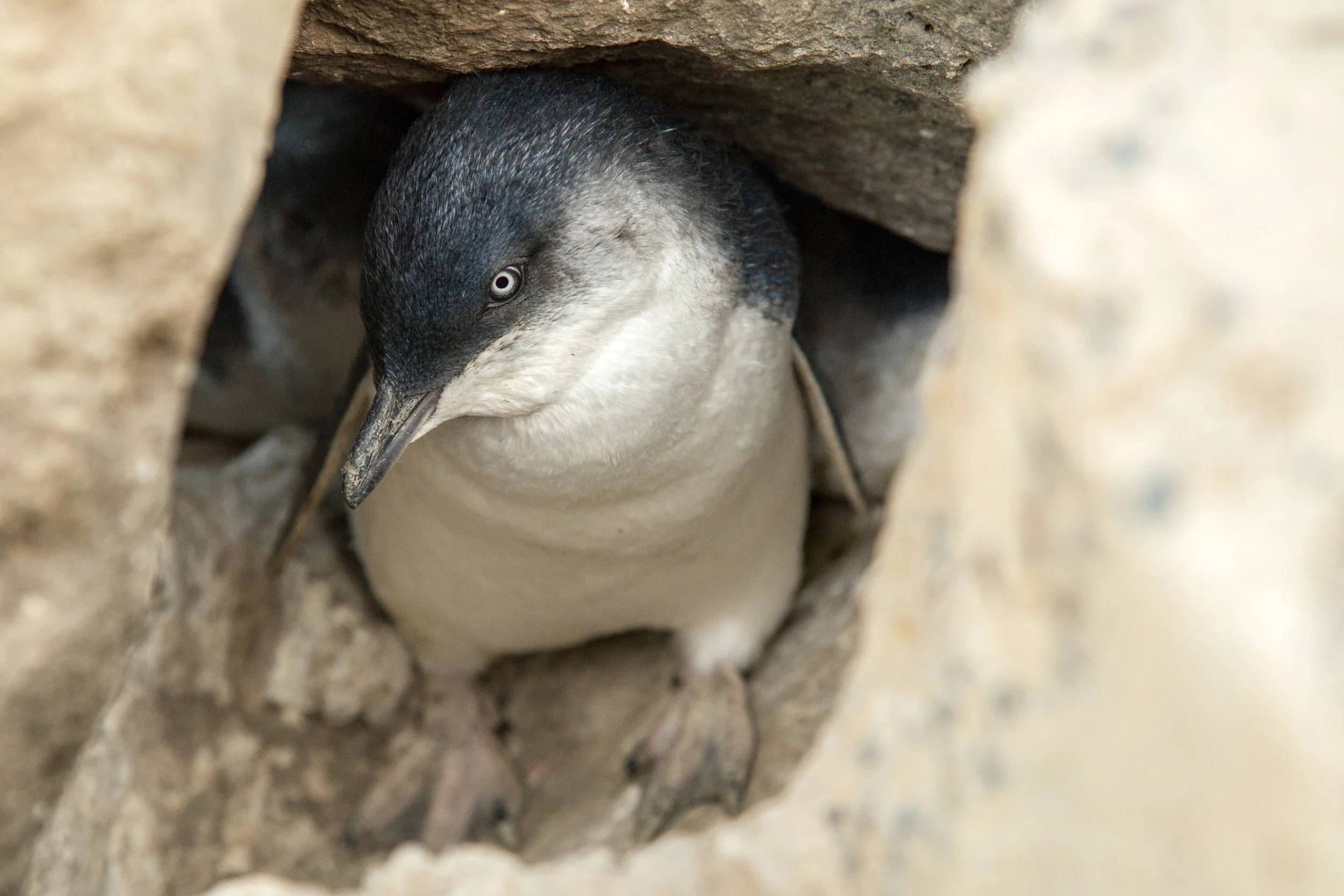About Low Head Penguin Tours
The Low Head Penguin Tours has been in operation for over 25 years. Learn more about the founder, Shirley Lincoln, in the video below.
Shirley Lincoln is one of the founders of Low Head penguin tours. In 1995 when the Iron Baron ran a ground, she was one of the people that caught all the birds. They took them back to the pilot station where they were washed in sunlight dishwashing detergent and once they were washed and got all the oils off the birds they had to be force fed.
In 1996, Shirley started the Low Head Penguin tours, where some nights about 200 penguins arrive on the beach at once. Shirley believes it is really important to be respectful of the penguins safety and also their environment. There are approximately 2000 to 4000 penguins in Low Head, and the most common breed is probably the blue penguin, or Eudyptula minor. Shirley says “they are generally a pretty happy bunch, and we want it to stay that way.”
They take on small groups of 10-15 people at a time in order to protect the birds and make sure everyone has an experience they can remember, getting up close and personal with the penguins. The local guides make sure that everyone gets to discover these beautiful birds while protecting their habitat.
Credit: Tourism Tasmania
About Penguins
Low Head is home to a unique species of penguins unique to Australia and New Zealand
The scientific name of the Little Penguin (formerly known as Fairy Penguin or Blue Penguin) – Eudyptula minor – is most descriptive. Not only are these penguins the smallest of the species, but Eudyptula means ‘good little diver’.
Image Credit: Tourism Tasmania & Chris Bell
Description
Only 30cm tall and 1.1kg (2.4lbs)
Little Penguins are the smallest penguin species in the world. They are flightless seabirds who breed in colonies along the southern coast of Australia, as far north as Port Stephens in the east to Fremantle in the west. Subspecies are also found in New Zealand.
Their dense waterproof plumage is dark blue on the upper parts of the body and white on the underside. The single Australian subspecies is distinguished from the five New Zealand subspecies by having a margin of white feathers on the tail and on the rear edge of each flipper.
Breeding
Little Penguins usually breed on offshore islands or, less commonly, along parts of the mainland coast that are inaccessible to mammalian predators. Most breeding sites are adjacent to the sea, with burrows in sand or soil or under vegetation, but in some areas the birds nest in caves or crevices in rock falls. A few sites are in urban areas and some are on anthropogenic structures such as breakwaters. The type and structure of vegetation in the breeding areas varies from sparsely-vegetated caves and rock screes through grass-, herb- and scrublands, to woodland and forest (Marchant and Higgins 1990, Dann 1994, Fortescue 1995).
Locations
The world breeding population is thought to be between 350-600,000 birds, comprising 300-500 000 in Australia (Ross et al.1995) and c.50-100 000 in New Zealand (estimated from Robertson and Bell 1984). These figures are undoubtedly underestimates as new colonies are still being found. Bass Strait, with 60% of the known breeding population, is the stronghold for the species in Australia. However less than 5% of breeding pairs are found on mainland Tasmania, where ever-increasing human pressure will probably result in these colonies extinction. The largest populations are found on Tasmania's offshore islands.
Their breeding distribution in Australia, extends from the Shoalwater Island Group (Penguin and Carnac Islands), near Perth in Western Australia, across the southern coast (including Bass Strait and Tasmania), and up the east coast as far as South Solitary Island in New South Wales (near Coffs Harbour) [Blakers, Davies and Reilly 1984, Marchant and Higgins 1990].
In New Zealand, Little Penguins are found around the coasts of the North, South, Stewart and Chatham Islands (Marchant and Higgins 1990, Dann 1994).
While the species is not endangered, some populations are threatened and penguins no longer breed at some previously occupied sites. In addition, the size of some breeding colonies has diminished since European settlement in both Australia and New Zealand (Dann 1992, 1994). Conversely, several new colonies have become established in the recent past, for example at St. Kilda in Victoria, where approximately 200 birds now breed on a breakwater constructed for the 1956 Olympic Games (M.Cullen, unpublished obs.).
It's a record
Researchers at the Phillip Island Nature Reserve have been following the fate of one particular male penguin since 1994. On one foraging trip while gathering food for his growing chick, the penguin dove down to 57 metres - three metres deeper than the previous deepest dive of 54 metres. http://www.abc.net.au/science/scribblygum/march2003/
Reproduction
Fairy penguins live on average for 7 years, and some retain the same mate for life. Most Little Penguins do not breed until they are two or three years old. Breeding is roughly seasonal, peaking around spring: some pairs breed twice in one year.
A clutch of two white eggs is laid in spring. Male and female birds share the 36-day period of egg incubation. When the chicks hatch they are initially helpless and are brooded continuously for about 2-3 weeks. After this period both adults leave the chicks unguarded in the nest during the day, while they forage at sea to obtain food for the rapidly growing chicks. By 8 weeks of age the chicks have lost their down and acquired the waterproof plumage necessary for independent life at sea. These young birds are not seen again at their original colonies for at least a year and may disperse widely during this period.






